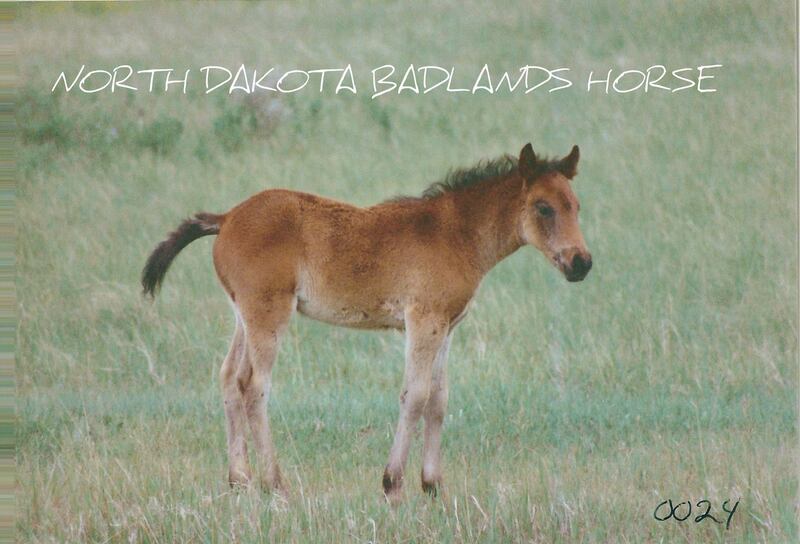REMEMBERING COCOA
|
My history with Cocoa goes back 18 years so this may be a bit long but, bear with me, he had an interesting story. Cocoa was foaled into and sired by the first Wind Canyon. That summer a rather homely black stallion, Black Brutus, took the "piebald sorrel mare" from Wind Canyon. So just before the time of the 2000 roundup Black Brutus had a small band including the piebald sorrel mare and her young colt, Cocoa. About a week before the roundup there was a terrific storm with a lightning strike that hit a tree on the east side of the river around a mile west of the park's Wind Canyon overlook. The conclusion of the thunder caused part of a butte to break off and slide into the Little Missouri completely daming it up in that area. The lighting also caused the instant death of Black Brutus and a two year old blue filly. The rest of the band was so frightened that they ran to the west side of the river and did not come back until spring. Stormy and her filly, Chubby, were part of that band but they got picked up by Curious George whIle the piebald sorrel and Cocoa went back to Wind Canyon I. In a few years Cocoa grew to be a strong young stallion and gained a band of his own. One summer Henry and I were collecting data for CSU (feeding, resting, aggressive, and reproductive activity) on several bands below Sheep Butte when Cocoa and his band wondered up behind us, cornering us on the very end of the butte. We could have slid down the bank in front of us but there was no aggression shown, just curiosity, so we just kept on working. Within minutes Cocoa bred Stormy right behind us. It was almost as if he know what we were recording. Yup, we recorded that too. In 2014 Whit Hibbard came back to the park to give another workshop on Low Stress Animal Handling. The second day he went out with several of us to do some field trials on moving the horses on foot. Whit and Blake, the Wildlife Biologist, were conducting a field trial on moving Cocoa's band around a half mile with the objective just to get them to a trail marker post on Talkington Trail. Cocoa was not at all cooperative, trying to push his mares south instead of east but the guys were making some headway with the mares. Cocoa finally let them have the band of mares but he was obviously upset with the whole operation. When the others were still several hundred yards away, Cocoa went right to the trail post, reared up on his hind legs, and violently pawed the air. It was as if he knew the objective but was showing his defiance to those two legged stallions. Later that summer, another volunteer and I were doing low stress herding trials on horseback. We had moved Cocoa and his band about 1/4 mile to our objective and let them pass on by it. Since it was getting later in the day, we decided to relocate Cocoa's band and again move them back to the objective, Upper Jones Creek Parking Lot. We moved them a ways before we saw that there was a trail that would be hard to get them past, so Dan rode over to block that trail while I just stood quietly on Hawk, holding the band until Dan got into position. Hawk, my horse, and I were around 50 yards from the band just waiting when Cocoa arched his neck and started trotting right at us. I couldn't think of anything else to say but, HEY, HEY, HEY! Cocoa abruptly turned around and calmly trotted right back to the band. Hawk never moved a muscle! The next day we were able to move that band two miles. Having practiced the field trials 32 times (30 times by NDBH volunteers), it was determined that moving the horses on foot was more effective than moving them by horseback. After the catch pen was built on the flats, it was time to test it. The first band we tried was Cocoa's. In around 20 minutes Henry and I were able to bring in the entire band, that is, the entire band minus Cocoa. He let us have his band and went over to a nearby hill to watch. As Cocoa aged, it seemed Coal always had his eye on Cocoa's band. One day a friend and I witnessed Coal circling Cocoa and his band for hours trying to wear down the older stud. Cocoa would occasionally charge at Coal so that Coal would widen his circle but Coal would not give up. By the next morning, Coal had a couple of Cocoa's mares, Busy Blue and Maggie. Like all the band stallions, Cocoa spent his life defending his harem of mares. He did a good job and produced many nice descendants over the years, at least 45 including second and third generation descendants. Twelve of them are still in the park so he will be well represented and well remembered. Rest in peace old friend. 💔 - marylu |







